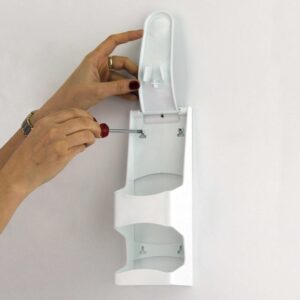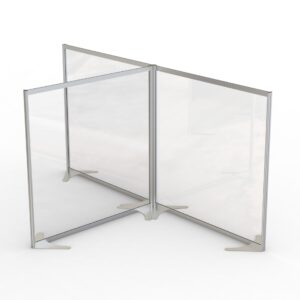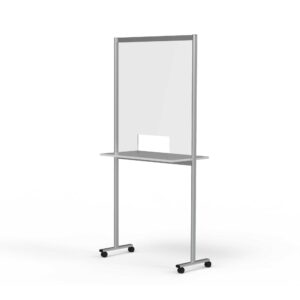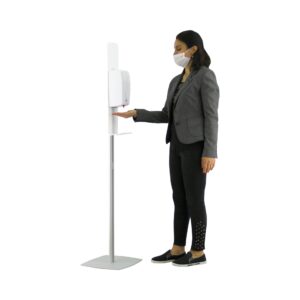
Protective Hygiene Barriers
Protective Hygiene Barriers is the general name of the health products used in companies and organizations. They are also called Personal Protective Equipment (PPE) and are highly recommended by FDA. Especially after the COVID outbreak, most workplaces commonly use safety measures to maintain daily working life and protect visitors, customers, and staff.
Social distancing, hygiene, and safety products also contribute to your brand image. They represent the value you give the customers, visitors, or employees. In fact, from small to big, all respectful businesses use protective hygiene barriers today, e.g., sanitizer, sanitizing stations, and health barriers.
Where to use protective hygiene barriers?
Regardless of business line and sector, you can use protective hygiene barriers. They are suitable for offices, educational and medical institutions, museums, exhibitions, conferences, and different places or events.
Safety products should be available in every place where people gather, from private enterprises to public institutions.
Sanitizers, sanitizing stands, and hygiene stations are put in use in front of the entrances. Also, separators or protective barriers are taken advantage of in offices, meeting rooms, or other indoors.
How can I choose protective hygiene barriers?
There are many types of protective hygiene barriers. Some of them are sanitizers, separators, face shields, and barriers. They also have sub-categories, such as desk separators, divider screens, sneeze guards or freestanding entrance guards.
You have many options to find suitable products for your needs. You can buy wall-mounted sanitizer and a hygiene station for a crowded business area. If you have a reception area or a place needed for document exchange, personal equipment, such as desk separator or hygiene shield, becomes essential. If your company permanently has a meeting, you should take precautions in the meeting room. You can separate the meeting room or desk with a desktop screen or divider screen.
While keeping your health, sustaining communication is also important. You can use products made of transparent materials on your desk, stand or table to maintain contact. Protective acrylic products are a good choice for preserving communication as you can see each other's faces.
Quality is one of the most vital qualifications. Therefore, you can check materials and designs. Also, have information about the installation of the product and see whether it is easy and quick.
Warranty and after-sales support should also be considered. Purchasing your product from a company having product information, warranty, after-sales support, and customer service helps you if you have questions or problems.
What are the types of protective hygiene barriers?
Protective hygiene barriers vary by place and aim of use, design, and mounting style. For instance, sanitizer stands and screen dividers are used for different purposes, although both protect against harmful organisms. On the other hand, sanitizers have various kinds, such as wall-mounted sanitizers, touch-free sanitizers, elbow hand sanitizers. Also, some hygiene stations involve sanitizer, tissue box, waste container, and mask box.
Social distancing products aim to keep distance between people or block virus transmission. Beside freestanding ones, you can use smaller equipment for one person on the reception desk, such as personal barriers.
Different aesthetic designs give you a chance to select. It would be best to consider your needs while choosing products and models among all products. You can ask the manufacturer company for details, which can help you with specific products. If you have any questions or looking for protective hygiene barriers, call or mail our customer representatives. We will be appreciated to help you.
How to use protective hygiene barriers?
There are many types of protective hygiene barriers, and dependingly, usage changes. Nevertheless, most hygiene products become ready for use in a short time with the least effort.
For instance, while touchless sanitizers work with sensors, elbow sanitizers are required to use your elbow to get disinfection. To use suspended barriers, you should mount them on the wall. However, you can apply your desk separators by putting them on the table.
In short, the types and models of protective hygiene barriers determine how to use them. The essential thing is, when you get the product, you should be informed about how they are used. Also, you should be able to reach customer service if there is any problem with installation and usage. Considering all of these, purchasing your product from a company with after-sales supports, e.g., customer services, helps more effortless and quick installation and application.
What are the advantages of ORES Protective Hygiene Barriers?
We design protective hygiene barriers by taking into account ease of use and durability.
Not every company produces protection hygiene barriers themselves; most sell them supplied by manufacturers. Therefore, it is tough to get help from them when a problem occurs as they can not know all information about the product.
We design and produce protective hygiene barriers in its industrial location. Therefore, we are acquainted with every stage of production and know product information in detail. Furthermore, all our products are subjected to quality controls to minimize errors.
We have customers from various countries using ORES hygiene products in their companies. Quality is one of the most important reasons we have become the leading sector. Alongside high-quality outer materials, all parts of the products, including minor mechanisms like screws, are complied with global standards.
We have a wide- range of products alongside offering customization when required. So, you have many product options with ORES.
In short, we are with you for customer satisfaction, from producing to packing with quality checks, customer service, and customization.

















